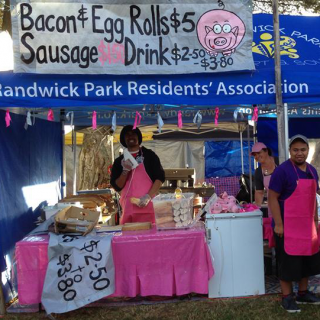FEATURED STORIES
Case Studies & Initiative Journeys
Case Studies described here are real examples of how an organisation has used an approach in Aotearoa New Zealand. Contact the featured organisation if you want to find out more. Please contact us to find out if there is a case study you think might be good to profile on this site.
Creating Stronger Community
Evaluative Approach
Appreciative Inquiry and Story Telling
Organisation
Randwick Park Residents’ Association
Location
Manukau – Auckland
Overview
Dave Tims is a member of Randwick Residents Association and Director of Urban Neighbours of Hope, a Missional Order of the Baptist Union.
Appreciative Inquiry (AI) is being used all over the world – in the mountains of the Philippines, with street children in Africa, by health providers in the UK and as part of community development projects in Auckland.
Terry LeBlanc is a First Nations theologian and community activist from Canada who provided AI training for community organisers in Auckland. He taught Randwick Residents Association members, who use AI in two formal settings: with the Residents Association and with a local church. Both groups use the four Ds of AI in their development planning and monitoring change:
- Discovery
- Dream
- Design
- Delivery
Over the last five years Randwick Residents Association has helped neighbours find opportunities to make their community an even better place to live in. AI is one of the ways the Association has found useful to identify things that could be changed and to monitor change.
How Appreciative Inquiry has been used
Residents record or share their stories of change in meetings. When they share their stories, it’s by one-on-one conversations, through a formal course: Certificate in Youth Work. Every three weeks, course participants tell stories of their involvement with young people – noting change and progress.
Randwick Residents Association facilitates story-telling at community forums where residents discuss a particular theme or issue. They tell stories around that theme, like safety, transport, environment and education.
Randwick Residents Association has no funders for this activity so it doesn’t need to record it. But it would be easy for a member to take notes, while protecting individual identities, and build a picture of what is changing.
Other story-telling happens through public speaking opportunities such as council-led meetings, TedX talks and community presentations and events. Other community groups have asked the Association to share stories about change and now it’s mentoring other residents associations.
We take a team of four or five residents to share our stories. That sharing helps us reflect on our progress and discover new insights for ourselves,” Dave says.
Photographs are often used to show change and residents have used Photovoice to make a case to council to invest in public infrastructure.
“We see participation of volunteers as key evidence of change in action – locals taking ownership and responsibility for our issues and doing something positive about it,” Dave says. “We now have three weekly youth clubs all run by volunteers.”
Dave says AI has helped the community to grow and change.
It’s profound for whānau and community leaders who see and hear the stories of change.”
The community shares stories of change with decision-makers by inviting politicians and potential sponsors to big events to hear the stories and meet the people.
“This is also developing local leaders and the decision-makers can see and feel it for themselves at these events.”
Signs of change
Randwick Residents Association has been developing ways to measure change:
- Seeing things happen – dreams coming true. One of the steps in AI is dreaming, so seeing a dream realised is an important sign of positive change.
- Care, belonging, ownership, responsibility, pride. Tracking the levels of these amongst residents.
- An abundance of appreciation. Looking for examples of appreciation and hoping we notice and practice it more often.
- A neighbourhood that is looking after the kids and keeping on each other. Increasing care for children and mutual support amongst adults.
- An enterprising, self-reliant community creating work and employment. Increasing opportunities for decent work.
- Feeling safe and confident. Perceptions about our place and ourselves.
Lessons Learnt about Appreciative Inquiry
Dave’s advice for anyone thinking about using AI:
If you follow the process, it creates ownership and responsibility – the people own the mission and become responsible for implementing it. We collectively measure whether we’ve achieved what we set out to do.”
“AI recognises that the past influences the present and shapes the future,” he says. “The past is important to acknowledge as we can all find things we did well and what contributed to those that can help us in the present and future. This is sometimes overlooked by funders and agencies, who sometimes forget that people don’t live in a vacuum as empty vessels to be filled with knowledge and sent off to be model citizens.”
Dave says AI is also a group process where people work together to create a better future and honour the contributions of individual skills and strengths. It’s a collective responsibility and AI measures collective rather than individual change.
Some limitations and challenges with AI that Dave has found are:
- It takes a long time – there’s the old saying: “If you want to go fast, go alone, if you want to travel far, go together.” The journey is worth it with AI.
- I thought I could lead the group as an insider but it’s more helpful if an independent/neutral person leads it.
- Experienced practitioners like Terry LeBlanc suggest many groups only get to the dream or design stage – it takes significant time to do the AI process properly and if the group is large, situations and participants can change.
Recent Innovations
Terry LeBlanc has developed a matrix to be used with the process so that each word in the mission statement is fully explored and has an implementation plan attached to it.

